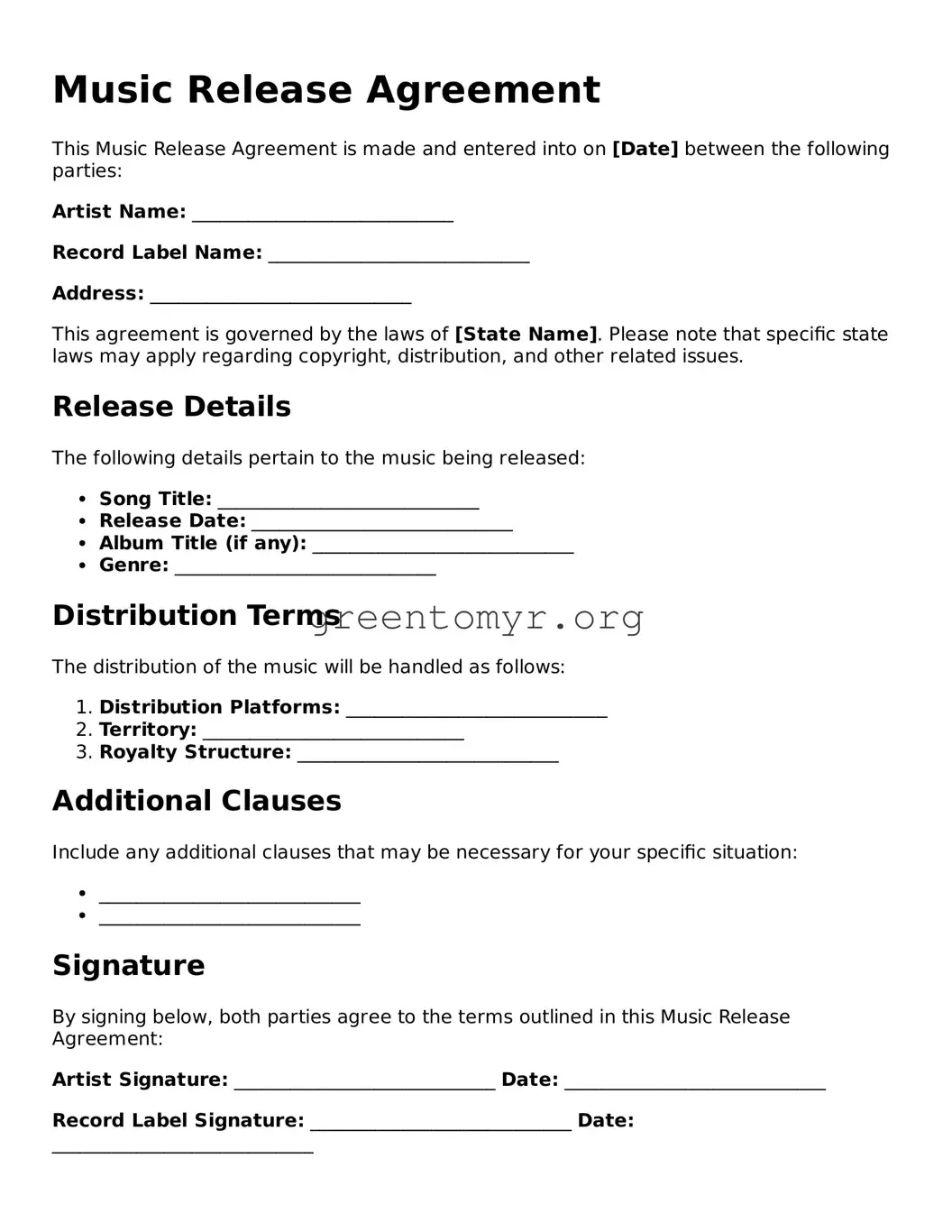Music Release Agreement
This Music Release Agreement is made and entered into on [Date] between the following parties:
Artist Name: ____________________________
Record Label Name: ____________________________
Address: ____________________________
This agreement is governed by the laws of [State Name]. Please note that specific state laws may apply regarding copyright, distribution, and other related issues.
Release Details
The following details pertain to the music being released:
- Song Title: ____________________________
- Release Date: ____________________________
- Album Title (if any): ____________________________
- Genre: ____________________________
Distribution Terms
The distribution of the music will be handled as follows:
- Distribution Platforms: ____________________________
- Territory: ____________________________
- Royalty Structure: ____________________________
Additional Clauses
Include any additional clauses that may be necessary for your specific situation:
- ____________________________
- ____________________________
Signature
By signing below, both parties agree to the terms outlined in this Music Release Agreement:
Artist Signature: ____________________________ Date: ____________________________
Record Label Signature: ____________________________ Date: ____________________________
